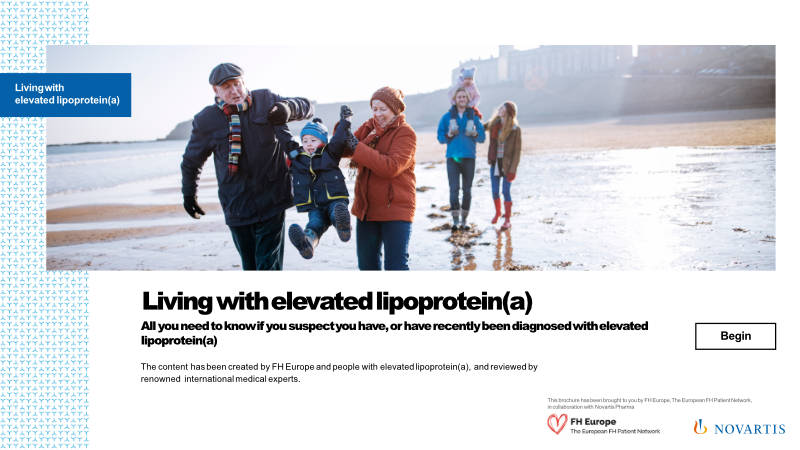
Launched in 2022 to raise awareness of elevated lipoprotein(a), also known as elevated Lp(a) and pronounced: “l-p-little-a”. High Lp(a) concentration is one of the most important causal risk factors for cardiovascular disease (CVD).
At FH Europe Foundation, we use the power of our international patients’ and ambassadors' voices so that everyone understands why they should know about Lp(a) and help you to find whether you have high Lp(a) concentrations. Through our international Network, as well as social media engagement, we will draw attention to this important inherited disorder and encourage everyone to join the movement. And we need your help!
By sharing important information, we can empower all stakeholders to spread the word about high Lp(a) as an under-recognized cause of premature heart disease and stroke. This March we can reach more people at risk for early heart disease and stroke with the third annual Lp(a) Awareness Day. We can make a difference for those who may never have heard of this very common CVD risk factor which runs in families but is undiagnosed in most individuals.
Lipoprotein (a) is also known as Lp(a) for short. It’s passed on in your genes. Lipoprotein (a) is much like LDL cholesterol (sometimes called ‘bad cholesterol’) but is more ‘sticky’. High levels of lipoprotein (a) in your blood can stick to your artery walls and clog them up, leading to heart disease and stroke at a young age.
Lp(a) (pronounced “lipo–protein little a” or “l p little a”) is a lipoprotein rich in cholesterol.
The structure of the Lp(a) particle is very similar to an LDL particle. It differs from LDL as it contains an additional protein, called “apolipoprotein (a)” which acts similarly to a patch of “velcro” on an LDL particle. It is considered a very “sticky” lipoprotein particle because of the function of the added protein. Lp(a) is made in the liver and circulates in the blood just like other lipoproteins.
Many extensive population studies have shown a strong independent relationship between high Lp(a) levels and heart disease. This has led doctors to agree that elevated Lp(a) is a risk factor for cardiovascular disease. It is thought to increase the risk of cardiovascular disease by two different mechanisms:
High Lp(a) levels may accelerate the narrowing of arteries (atherosclerosis). This is because Lp (a) is retained in the artery wall more than LDL cholesterol as it binds to the artery lining through its “sticky” apolipoprotein (a)
High concentration of Lp(a) may trigger the blockage of arteries by the formation of clots. This is because Lp(a) is thought to interfere with clotting mechanisms and promote clot development on the inner surface of blood vessels. Apolipoprotein (a) appears similar to proteins involved in clotting, such as plasminogen. Some experts believe it has a greater effect on the clotting system than on the promotion of atherosclerosis.
Like Familial Hypercholesterolamia (FH), high Lipoprotein (a) is a lipid condition –often referred to as a ‘lipid disorder”, which is genetic and runs in family, but does not require genetic testing to be diagnosed.
Currently there are no approved treatments for high Lp(a). Yet there are some promising therapies in the pipeline.
Take action and help us raise awareness about this common genetic condition causing early heart disease and stroke.
Below you can find content for Lp(a) Awareness Day 2024, that you can download and share on social media.
Help us spread the word also by using the following hashtags, when sharing:
#LpaAwarenessDay
#KnowLpa
#PeopleLikeUs
#FHEurope
#UseHeart
#VoteHealth2024
You can also download social media posts in other languages:- German, Hebrew, Hungarian, Italian, Latvian, Polish, Romanian, Slovenian & Spanish. Choose and download the extra languages







Here you can access the European Heart Journal EAS Consensus Paper for Lp(a) which outlines the main guidelines in Europe for elevated Lp(a).
Here you can access a policy publication on how public health recommendations should address Lp(a) measurement:

